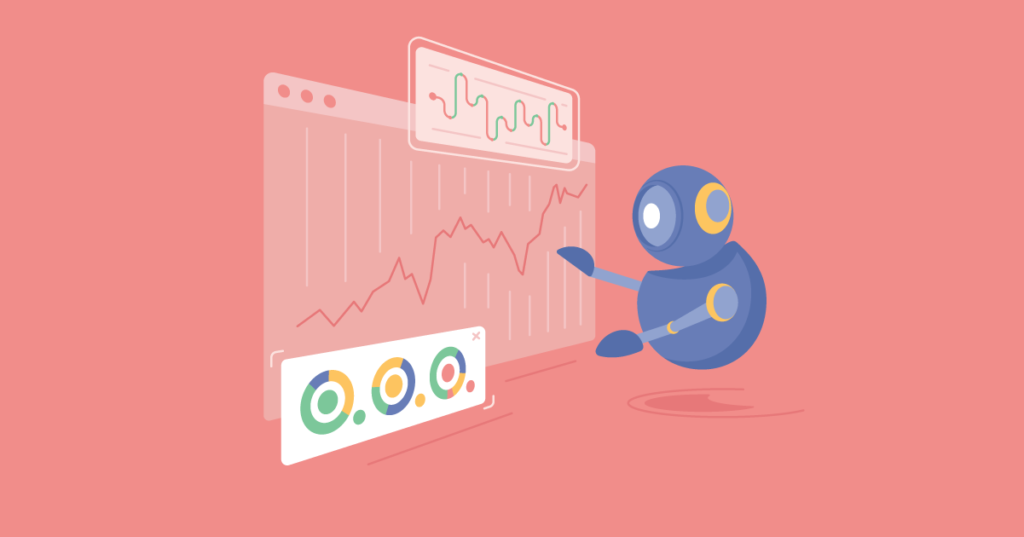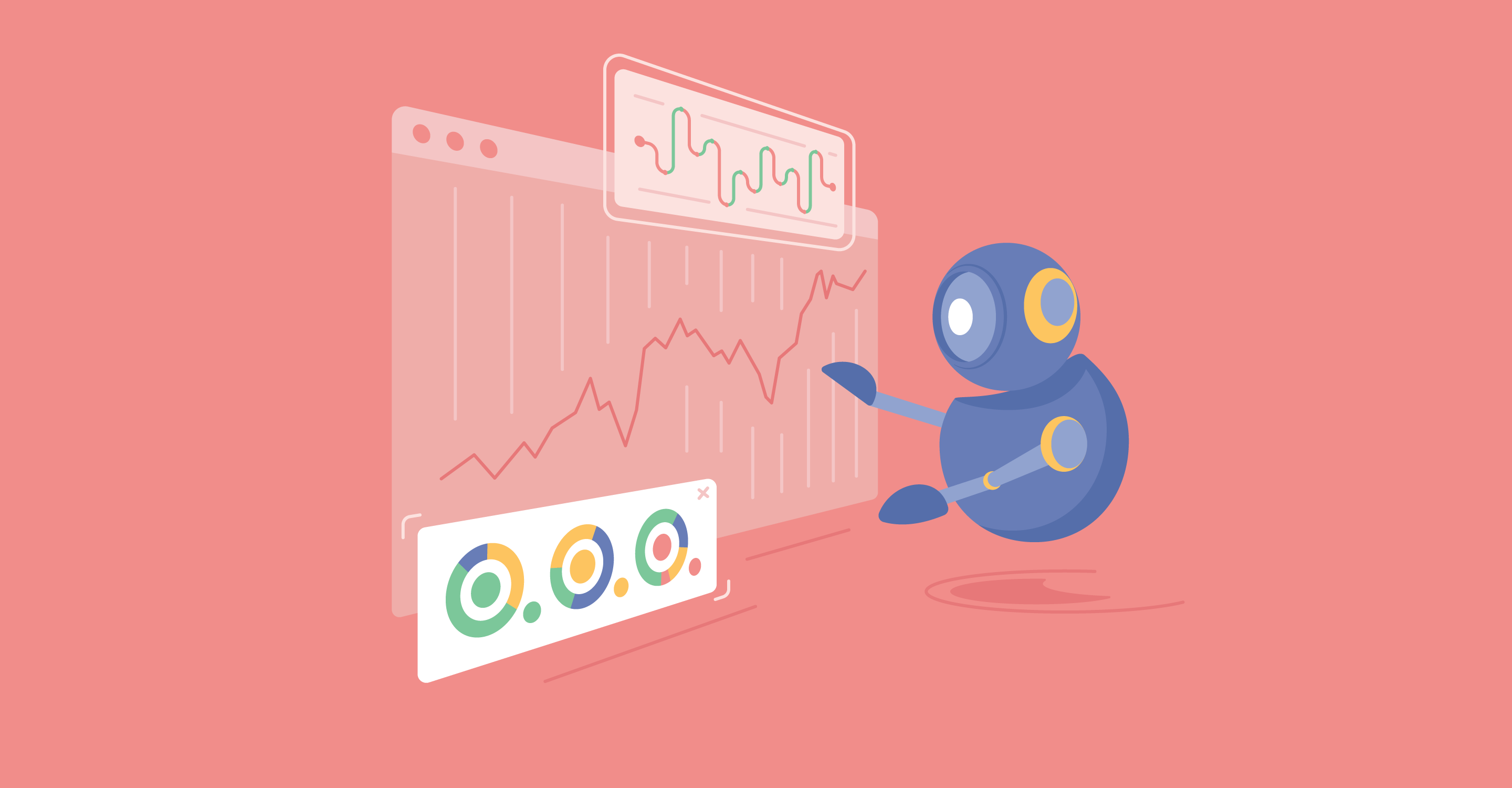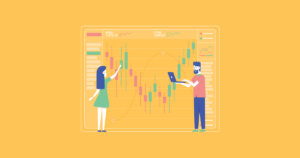Algorithmic trading, alternatively known as automated trading, black-box trading, quantitative trading or algo-trading, is a method of high-risk (read: speculative) investment in which transactions may be performed by a computer based on pre-established algorithms.
The essence of algorithmic trading can be formulated as follows: it is the analysis and utilisation of market patterns to predict price movements in a selected yield curve — preferably, of course, growing yield.
In theory, at least, trading algorithms are able to remove human error and provide an increased opportunity for investors to maximise their profits. In practice, however, while these goals may not always be painlessly achieved, these algorithms are without a question easy to implement and may be considered a low maintenance trading solution. On that note, in order to increase trading success rates, you can also backtest your algorithms with both historical and real-time data to determine if you are working with a viable trading strategy.

Who Uses Algorithmic Trading
When it comes to algorithmic trading, all participants in the exchange market, be they institutional traders — such as investment banks, investment funds, pension funds, hedge funds and mutual funds — retail traders, or even amateur private investors, have the ability to create and utilise their own trading robots for automated trading. Similarly, they can also use robots written by third-party developers or companies.
In fact, according to a recent report, 70-80 percent of overall trading volume is currently handled by trading robots. This leads to a number of significant concerns, as flash crashes that are linked to trading robots have been known to occur in the past (see the October 2016 flash crash for context).
With this in mind, in order to adequately track the market situation and increase risk management effectiveness, beyond backtesting, it is important to make use of forward testing, a technique in which trading may be accurately simulated through the so-called “paper trading” technique. This enables you to understand how your trading strategy will likely perform in the actual market, and as a result gain additional confidence in your elected trading strategy.
What Exactly Is Being Automated
The prevalence of algorithmic robots on trading platforms is more than justified. After all, by following simple trade entry rules, trade exit rules and other straightforward selected criteria, trades are automatically placed and custom indicators may be displayed.
Yet despite this undeniable ubiquity (see MetaTrader, Wealth-Lab, TsLab and Backtrader for some popular algorithmic platforms), one should never assume that the automation of exchange trading is only happening on account of trading robots. In reality, there are several other types of functions that are successfully solved by automated systems:
- Screening. Selecting assets for trading or investment, without neglecting fundamental or seasonal factors.
- Portfolio and position management. Rebalancing and risk management are some notable examples.
- Tracking market situations, including automatic opening and closing of positions.
- Arbitration strategies. Tracking inefficiencies in correlated assets
Now, when we talk about the development of an automated trading strategy, it is usually implemented by going through the following stages:
1. Research phase
Identification of market patterns that enable you to make a profit
2. Development and testing phase
Trading algorithm implementation and backtesting
3. Validation phase
Simulation of trading on a real exchange (i.e. the so-called forward testing)
4. Operation phase
The launch of a trading strategy on a real account
What Modules Does a Robot Usually Consist Of?
While popular trading robots include TradeMiner, Forex Diamond, FX Pattern Pro and FX-Agency Advisor, what modules do these generally consist of?
1. Trading platform.
This is usually a ready-made and custom solution with a library of components for receiving quotes, placing orders, a set of basic indicators and a system for generating reports as well as calculating and visualising statistics. Examples of such platforms include the aforementioned MetaTrader, Wealth-Lab and others.
2. A connector module for any broker which is a part of a trading platform.
With the help of this module, the trading algorithm is able to manage your position via a broker — or any other exchange intermediary — through which trading may then promptly be conducted.
3. Trading strategy.
This consists of a specific trading algorithm that implements the purchase and sale of assets according to certain rules and pre-established buy/sell code. It also considers any individual money management rules and other risk management criteria assigned to it.
Features of Successful Algorithmic Trading
While there are certainly robots in the market that offer phenomenal market returns — some in the hundreds of percent showing fantastic long-term history to boot — after encountering random online success stories, many investors seek to repeat them without sufficient knowledge of the path that trading algorithms take. With this in mind, companies wishing to implement their own trading robots and similar projects must remember the many hours spent in development and years of research and experimentation. After all, as it turns out, the path to the implementation and successful launch of a trading algorithm is laden with well-meaning dreamers who have given up on the race.
Nonetheless, another way to launch a trading robot is to buy a ready-made solution with a proven history of real transactions. Unfortunately, however, it is not enough to simply purchase a successful trading robot and expect it to start generating income immediately. Because markets are in a continuous state of flux, algorithms that worked well yesterday may become unprofitable today. This results in the need for developers to create efficient ways to respond to the market, investors to quickly adjust their positions (or even withdraw from their auctions completely) and new revisions to then take place in accordance with the new market realities.
AI and Machine Learning in Algorithmic Trading
In recent years, AI and machine learning have revolutionised algorithmic trading by enabling the development of more sophisticated and adaptive trading strategies. These technologies analyse vast amounts of market data in real-time, identifying patterns and making decisions faster and more accurately than human traders. As a result, trading algorithms can continually learn and evolve, improving their performance and adapting to changing market conditions, thereby giving traders a competitive edge.
Ethical Considerations in Algorithmic Trading
As algorithmic trading becomes more prevalent, ethical concerns have gained attention, particularly regarding high-frequency trading (HFT). Critics argue that HFT can create unfair advantages and lead to market manipulation, where algorithms exploit minute price discrepancies to generate profits at the expense of market stability. Additionally, the speed and complexity of these algorithms can outpace regulatory oversight, raising questions about the fairness and transparency of markets dominated by such technologies. Addressing these concerns is crucial for maintaining trust in financial markets.


